How did contemporaries describe the Mieszko family? It was definitely not Poland. Among the names of the tribes inhabiting the lands of later Poland, the lack of Polans is striking.
When one looks in the sources for the names of tribes inhabiting the lands of later Poland, the striking thing is the lack of the Polan tribe, which appears only in the 10th and 11th centuries. This does not prevent various authors from locating them earlier in Wielkopolska. The attempts to derive the name Polan from ... pouring water during baptism sound fantastic , which Barbara Kürbis summed up with the words:"at the same time naive, but logical in its own way."
Mieszko, prince of what?
Only in the thirteenth century, the already mentioned entry "Mesco dux baptizatur" was supplemented with a geographical note. One word was then added: "Mesco dux Poloniae baptizatur" - meaning "Mieszko, the prince of Poland, was baptized" . Earlier this name was not used.
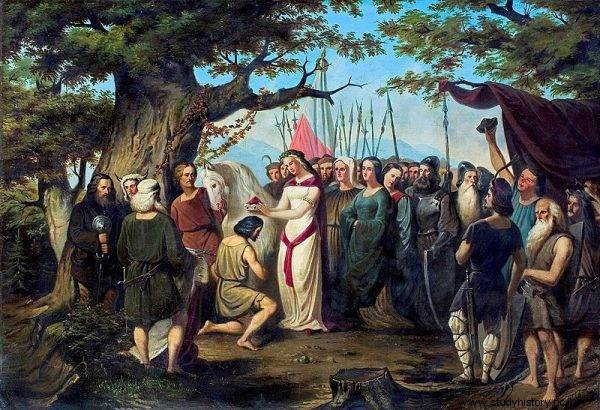
It is difficult to say what the state of Mieszko really looked like in terms of territory
Another issue is the territorial range of Mieszko's state. The only description contained in a document called Dagome iudex , probably created in 990 , it is illegible. Jerzy Strzelczyk even talks about the "unfortunate document", because almost every word written in it raises arguments among historians . The original is missing and the date of its creation is not verified. Only copies from the 11th century are known. In this document, Mieszko together with his second wife Oda and their sons Mieszko and Lambert entrust their state to the protection of the Holy See. However, the names mentioned in it are now almost completely incomprehensible. Therefore it is difficult to say what the state of Mieszko really looked like in terms of territory . Certainly, at that time, Małopolska and Silesia belonged to the Czech Republic.
State dispute
So the next question is: what were the borders at the time of Mieszko's baptism? At that time, only Greater Poland and perhaps some part of the Lubuskie region were under his control. It may sound radical, but I think that you should think about the validity of using the very concept of "state" which appears quite often in this chapter. For the convenience of reading and linguistic consistency, I use it, it is also present in textbooks, but it is worth knowing that this definition did not exist and was not used in the early Middle Ages. Therefore, it is a big simplification to understand baptism as the beginning of Polish "statehood" in AD 966.
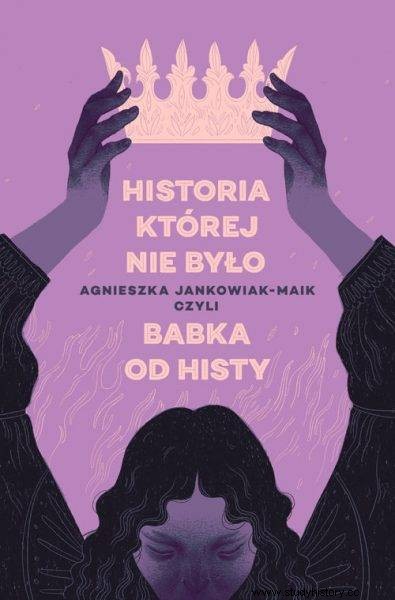
The text is an excerpt from Agnieszka Jankowiak-Maik's book "Historia, which did not exist" (Otwarte Publishing House, 2022).
This perception of Polish statehood was significantly influenced by the so-called "millennium program" implemented in the 1950s and 1960s, which was an element of the historical policy initiated in the Polish People's Republic. As early as in 1958, the Seym, competing with the Church, launched a huge program of historical and archaeological research . Its highlight was the celebration of the Millennium of the Polish State organized by the authorities. The Church has prepared a competitive celebration of the Millennium of the Baptism of Poland. This way of thinking about the state has remained with us to this day. But let's go back to the Middle Ages!
Christianization is not easy
The baptism of Poland is a concept that has become a permanent fixture not only in the school narrative. It has a symbolic dimension, but it is worth emphasizing that is another big simplification. Undoubtedly, the baptism took place, although it did not extend to all residents at that time. As part of the ceremony, Prince Mieszko I was finally baptized, certainly together with the nearest court. Then began the process of the country's Christianization, which was rather reluctant for several reasons.
The first was the small number of priests at the princely court, as well as the slow construction of churches, which is why evangelism was a challenge on a logistical level. The second reason was a lack of enthusiasm in accepting the new faith , which destroyed the existing belief system established for centuries, deeply rooted among ordinary inhabitants. The population could not understand the need to replace many deities with one. Christianity was also accompanied by complicated, abstract theological concepts concerning, for example, the Holy Trinity or the need to fast. Important and established rituals, such as burial, also changed.
The inhabitants of Mieszko's state, mainly farmers, were unable to understand the intricate principles of the new faith. It took a long process of education. There was no doubt also an influential group of pagan priests who were not content with embracing the new faith. For these reasons, it is difficult to speak of conscious Christianity of the first generation.
Failure of Bishop Jordan's mission
Przemysław Urbańczyk even called them opportunistic Christianity, which did not reflect the real need of the spirit. The task of Christianization fell to Bishop Jordan. According to historians, his imminent appearance in Poland was to justify a romantic vision of a rapidly progressing, problem-free process. The reality was completely different. The difficulties and even the failure of Jordan's mission and rapid evangelization were mentioned by Thietmar .
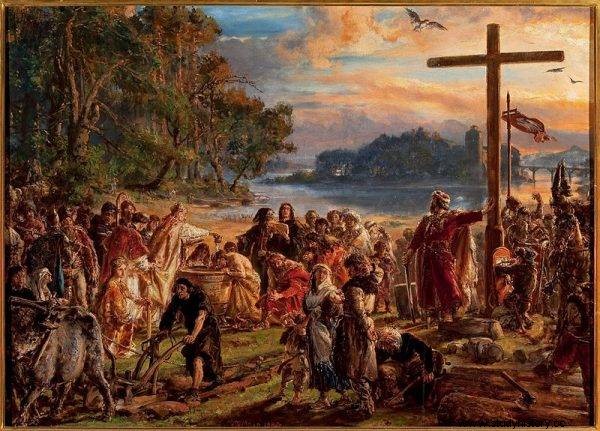
The baptism ceremony concerned only Mieszko and his immediate surroundings.
No archaeological discoveries confirm mass Christianization as early as the 10th century. There are no religious buildings, no unequivocally Christian burials, not even crosses as symbols of the new faith. There is no evidence that Mieszko founded at least one church in his territory . The establishment of the parish network can only be said at the beginning of the 13th century.
It should therefore be suspected that the conversion of Mieszko and his court did not bring about wide changes in the religious sphere of Poland at that time. Jerzy Strzelczyk in the nineties of the twentieth century wrote that initially Poland was "almost untouched by Christianity" . The punishments commonly used in the times of Bolesław the Brave, who ordered teeth knocking out for failure to observe the fast, prove the low effectiveness of the "baptism of Poland". There is also talk of the so-called pagan reactions that were supposed to have happened during his reign.
Pagan reaction
However, the most famous such reaction dates back to the early 1830s . The Czech chronicler Benedykt Minoryta then noted:"(...) there was persecution of Christians in Poland , churches and monasteries were burning ”, and in the chronicle of a Kiev monk A novel of years gone by there was a mention:“And there was a rebellion in the Lodz land. The people arose and killed their bishops and popes and their boyars. " Gall Anonymous also devoted some space to this rebellion in his chronicle. He clearly distinguished the popular uprising from a radical rebellion against the new faith. There is an entry in his chronicle:
Moreover, abandoning the Catholic faith, they rebelled against the bishops and priests of God, and some of them, supposedly in a more honorable way, they killed with the sword, and others, allegedly worthy of a lesser death, were stoned .
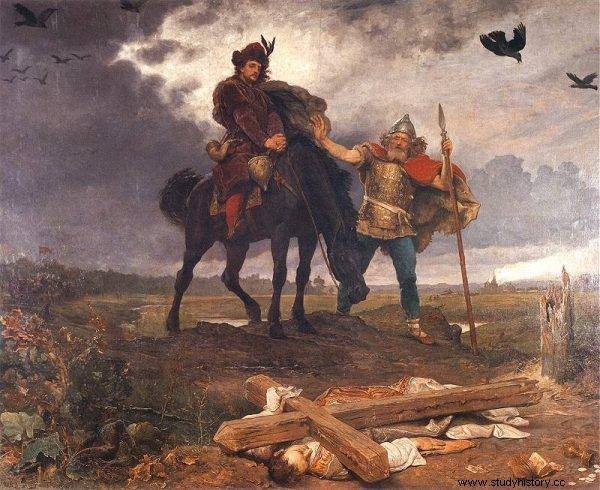
The effects of the pagan reaction were tragic
Another episode of our history, about which only a few lines have been written. Jerzy Wyrozumski emphasized that the exact causes of the spurt are unknown :“It was probably about things that are difficult to weigh and measure, things that are elusive, imponderables that are of great importance to simple people. It could be a defense of one's own tradition, local customs to which the inhabitants have been used for centuries. Local pagan rites were still being performed. As you can see, the commonly used expression "baptism of Poland" does not correspond to the truth.
The clearings that… did not exist
Poland did not exist then - such a name did not exist. Ba! There is no evidence of the existence of the Polan tribe from which the name of the whole country is derived . The baptism ceremony concerned only Mieszko and his immediate surroundings. After it, the evangelization of the inhabitants began, which, however, was both a long and objectionable process. In order to make the rooting of the new faith possible, the Church adapted some of the customs and traditions of the Gentiles over time. Giving new meanings to symbols important to the Slavs helped in the slow spread of the new religion.
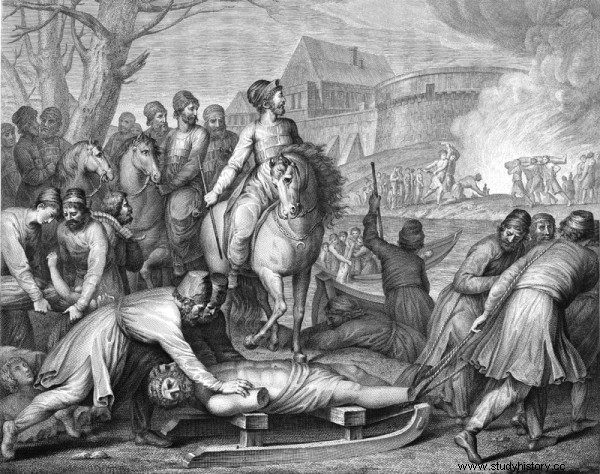
The exact reasons for the pagan reaction are unknown.
Mieszko I was at ease on the stage of the emerging Europe. His deliberate decisions were accurate responses to the changing situation. The new religion was used to build the authority of the ruler, especially since the ruler had a vision as "God's anointed". In the pagan world, Mieszko did not hold such a high position, no doubt due to his dependence on the elders. He gained hearing mainly during the war.
Christianity gave authority a divine sacred, a kind of anointing. Raising up your hand against God's governor on earth has become a crime and a mortal sin. It can therefore be assumed that in the long run the new faith favored the unification of the state. As Jerzy Strzelczyk stated:"(...) a uniform religious cult in the elevation of the only ruler, in the name of God, is a powerful ideological weapon, important no less than a strong army."
Source:
The text is an excerpt from Agnieszka Jankowiak-Maik's book "Historia, which did not exist" (Otwarte Publishing House, 2022).

